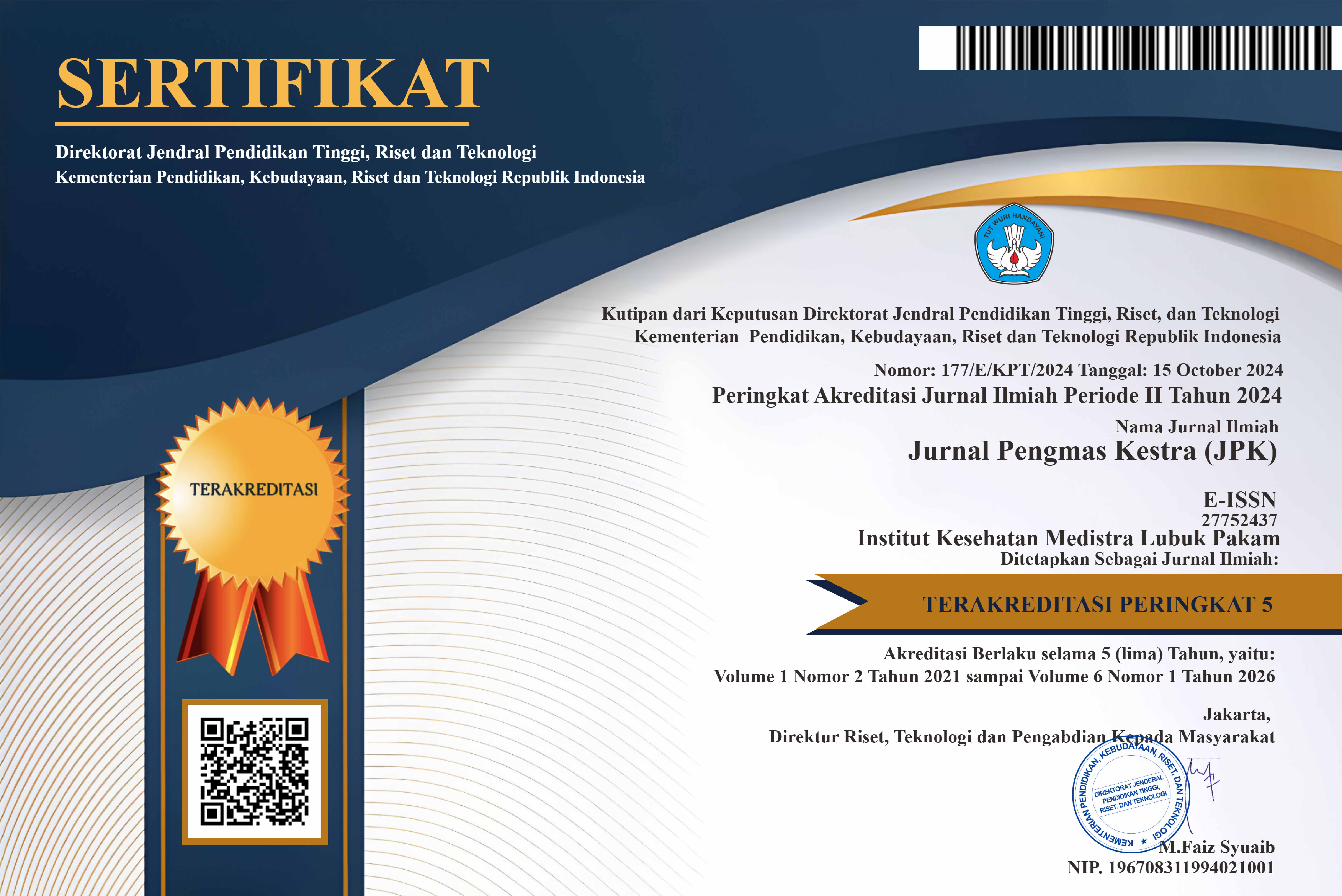Education Regarding The Factors That Cause Stroke in Communities in The Working Area of Puskesmas Sei Suka
DOI:
https://doi.org/10.35451/jpk.v3i2.1980Keywords:
Stroke; Factors; EducationAbstract
Stroke is a clinically defined acute and focal neurological deficit syndrome caused by vascular injury (infarction, hemorrhage) in the central nervous system. The main reason for stroke occurrence is this delay is public awareness of stroke, its symptoms, risk factors, or appropriate behavior (for example, the immediate occurrence of an emergency). Various risk factors can cause stroke, and one of them is age which cannot be changed. Hypertension is the most important modifiable risk factor for stroke, although its contribution differs for different subtypes. There are many risk factors that can cause stroke, namely factors that cannot be modified such as age, gender, genetics, and can be modified such as hypertension, diabetes mellitus, smoking, alcohol consumption and substance therapy and diabetes. Physical dysfunction is one of the dominant aspects of post-stroke disability, often associated with stroke-specific disorders such as motor impairment, fatigue, spasticity, and balance problems. Implementation of community service activities is carried out through notifications via the community health center information platform with a total of 20 community members residing in the Sei Suka Community Health Center Working Area. The results of this community service activity show that the majority of participants (more than 80%) in the community do not know the factors that cause strokes in the Sei Suka Health Center Work Area.
References
Kobayashi, A.; Czlonkowska, A.; Ford, G.A.; Fonseca, A.C.; Luijckx, G.J.; Korv, J.; De La Ossa, N.P.; Price, C.I.; Russell, D.; Tsiskaridze, A.; et al. European Academy of Neurology and European Stroke Organization consensus statement and practical guidance for pre-hospital management of stroke. Eur. J. Neurol. 2018, 25, 425–433
Lundelin, K.; Graciani, A.; García-Puig, J.; Guallar-Castillón, P.; Taboada, J.M.; Rodríguez-Artalejo, F.; Banegas, J.R. Knowledge of stroke warning symptoms and intended action in response to stroke in Spain: A nationwide population-based study. Cerebrovasc. Dis. 2012, 34, 161–168. [CrossRef] [PubMed].
Murphy Stephen JX. et al: Stroke: causes and clinical features, Medicine Abingdong, 2020 Sep; 48(9): 561–566. Published online 2020 Aug 6. doi: 10.1016/j.mpmed.2020.06.002.
Nordin NAM, et al: Effectiveness of home-based carer-assisted in comparison to hospital-based therapist-delivered therapy for people with stroke: A randomised controlled trial. August 2019Neurorehabilitation 45(1):1-11, DOI:10.3233/NRE-192758.
O’Donnell MJ, et al : Global and regional effects of potentially modifiable risk factors associated with acute stroke in 32 countries (INTERSTROKE): a case-control study, 2016, Lancet, 2016 Aug 20;388(10046):761-75. doi: 10.1016/S0140-6736(16)30506-2. Epub 2016 Jul 16.
Downloads
Published
Issue
Section
License
Copyright (c) 2023 Siti Sarah Bintang Sarah Bintang, Isidorus Jehaman, Titin Novayanti Dey, Sabirin Berampu

This work is licensed under a Creative Commons Attribution 4.0 International License.
Copyright in each article is the property of the Author.




















